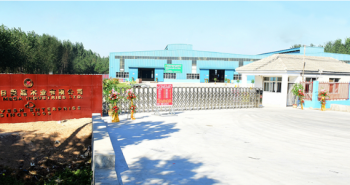Composition & manufacturing
Following storage for at least 3 months, the debarked softwood logs of selected species are reduced to flakes some 10 to 30 mm in length and 0.2 to 0.3 mm in thickness using drumknife flaking machines. After passing through a hammermill, the flakes are separated into surface and core material by screening, and are then mixed with Portland cement and water in the ratio by weight of: cement 60%, wood 20%, water 20%. Small quantities of chemicals are added to the wet mix; one of their purposes is to accelerate cement setting. The mat is formed in three layers, the outer layers comprising small chips. Unlike normal particleboard production in a multi-daylight press, the set of cauls in CBPB production must be kept under pressure until the cement has set and this is achieved by fixing a set of clamps to each set of cauls while in the press; these clamps are then released some 6-8 hours later after the set of cauls has passed through a heated chamber at 70 to 80°C. The panels are further dried before shipment. It is the high mass of Portland cement which confers on the product its good reaction to fire behaviour, its very high durability (as a result of the panel having a pH of 11), its high stiffness (E = 4500 N/mm2), it’s very good sound insulation and its good dimensional stability relative to other wood-based composites.
Applications
Primarily because of its lay up, composition and mass, CBPB is mainly used for specialized applications in construction. Thus, its outstanding merits, especially in terms of reaction to fire, durability, sound insulation and stiffness, render the product most suitable for internal wall construction in public places, lining of lift shafts, construction of cabling ducts, soffits, motorway acoustic fencing and cladding of prefabricated house units.

